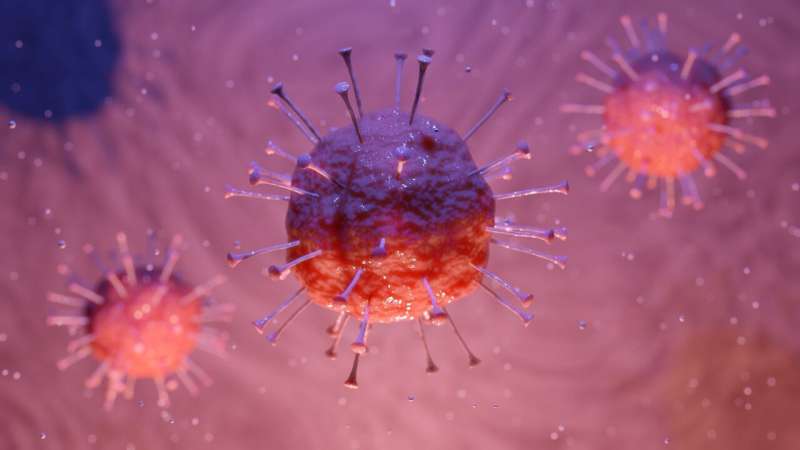COVID-19: An expert explains immunity and seasonality

The ongoing coronavirus pandemic has infected nearly three quarters of a million people worldwide, with more than 140,000 cases in the United States. As laboratories around the world—and here at Johns Hopkins—rush to develop treatments and vaccines for COVID-19, urgent questions remain about why some groups of people are more susceptible to severe illness compared to others and whether, as with other forms of coronaviruses, COVID-19 infections will taper off as the warmer months approach.
For answers to these questions, Sarah LaFave, Ph.D. student at the Johns Hopkins School of Nursing, turned to Andrew Pekosz, a professor of molecular microbiology and immunology at the Johns Hopkins Bloomberg School of Public Health. He discussed what the latest evidence shows and what researchers are working on to understand seasonality and immunity for COVID-19. The conversation has been edited for length and clarity.
What do we know so far about immunity and COVID-19?
Often, there are comparisons between COVID-19 and influenza because the symptoms are somewhat similar and because COVID-19 started to emerge in the winter, which is the same time of the year when we see influenza. But when it comes to immunity, there's a very big difference between influenza and COVID-19. With influenza, because of previous infections and vaccinations, there's always a percentage of the population that is immune to infection—so they're protected and won't get the flu that year. And there's an even larger percentage of the population that has some immunity—not perfect immunity, so you'll still get infected, but enough so that your symptoms will be relatively mild.
With COVID-19, to our knowledge, there's no one in the human population who has any level of immunity to the virus. So the percentage of people who are susceptible to COVID-19 is essentially 100%, whereas with influenza the percentage is significantly less than 100%. That's one of the reasons why some of the stringent public health measures are being put into place. There really is nothing else that can prevent this virus from spreading in the population outside of public health interventions like social distancing. It's the lack of immunity in the population that is making people so susceptible.
Why is it that older people are developing more severe symptoms than younger people, even though both groups have no immunity to COVID-19?
We don't have a good answer for that yet. It certainly seems that people over the age of 60, particularly those with secondary medical conditions, are at greater risk for severe disease. We're beginning to understand that men may also be at increased risk. We're seeing these trends pretty consistently across different countries. What we don't know yet is why. That's a really important area of research that my colleagues at Hopkins are working on. If we could better understand what's happening in high-risk populations to make them more susceptible, it could inform development of treatments for severe disease.
What's the role of seasonality in the spread of this virus?
A lot of respiratory viruses have a seasonality. In areas that have seasons, you often see more respiratory disease in the winter than in the summer. That's because the conditions of lower temperature and lower humidity help facilitate transmission of the virus. COVID-19 is entering the population during the winter but we don't know if it's going to act like a typical respiratory virus in terms of seasonality. We don't know if COVID-19 will be very dependent on winter to effectively transmit, like the flu, or if it will find ways to effectively transmit throughout the year.
If we look to the Southern hemisphere, in parts of South America and in Australia, we're seeing significant COVID-19 outbreaks even though this is their summer season. So we're expecting that the virus is going to be able to transmit here at least to some extent after the winter months.
Are you concerned that we'll see a dip in cases this summer and then see a resurgence next fall or winter?
I think that's a major concern. Nearer term, I'm concerned about what will happen if public health interventions are loosened. Right now, public health interventions are doing a good job of reducing the number of cases, but we don't know how long we will have to keep those measures in place. When we relieve them, there is always a potential for cases to spike again.
In addition to better understanding immunity and seasonality, what other aspects of COVID-19 are researchers trying to understand?
We're trying to understand how this virus is able to cause many more cases of mild disease compared to other viruses. We think that may be linked to why it's so good at transmitting. We're also trying to understand, once you've had the virus, whether you're safe to go out and work again because you have some level of protection.
We also want to understand what the true infectious time is. If you could shorten the time that someone has to be in quarantine, that would help with workforce issues. We're interested in the basic biology of the virus but we're trying to ask and answer the biological questions in ways that can inform the public health response to the pandemic.
How can people who have recovered from COVID-19 help researchers to understand immunity, seasonality, and other aspects of the virus?
We need people to volunteer after they've recovered to help us understand how their bodies have responded to the infection. Those types of studies are going to be so important because as we, hopefully, flatten the curve, we may have the opportunity to help people at the tail-end of the curve improve their prognosis based on findings from our study of people who were infected on the front-end of the curve.




















